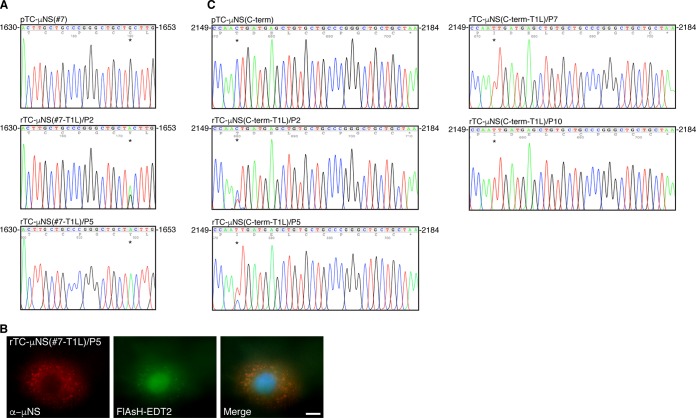FIG 6.
Sequencing of recombinant virus passages. rTC-μNS(C-term-T1L) and rTC-μNS(#7-T1L) viruses were passaged 10 times and sequenced to determine the stability of the TC tag. (A) The pTC-μNS(#7) and rTC-μNS(#7-T1L) viruses from passages 2 and 5 were sequenced, and the TC tag and acquired second-site mutation, portrayed with an asterisk (*), are shown. All other regions of M3 were the same as in the wild type. (B) CV-1 cells were infected with the rTC-μNS(#7-T1L)/P5 at an MOI of 1, and at 18 h p.i., cells were labeled with FlAsH-EDT2 (middle column) for 45 min and then fixed and immunostained with rabbit α-μNS antibody (left column), followed by Alexa 594-conjugated donkey α-rabbit IgG. A merged image is also shown with DAPI staining (right column). Images are representative of the observed phenotype. Bar, 10 μm. (C) The pTC-μNS(C-term) and rTC-μNS(C-term-T1L) viruses from passages 2, 5, 7, and 10 were sequenced, and the TC tag and acquired second-site mutation, portrayed with an asterisk, are shown. All other regions of M3 were the same as in the wild type.

